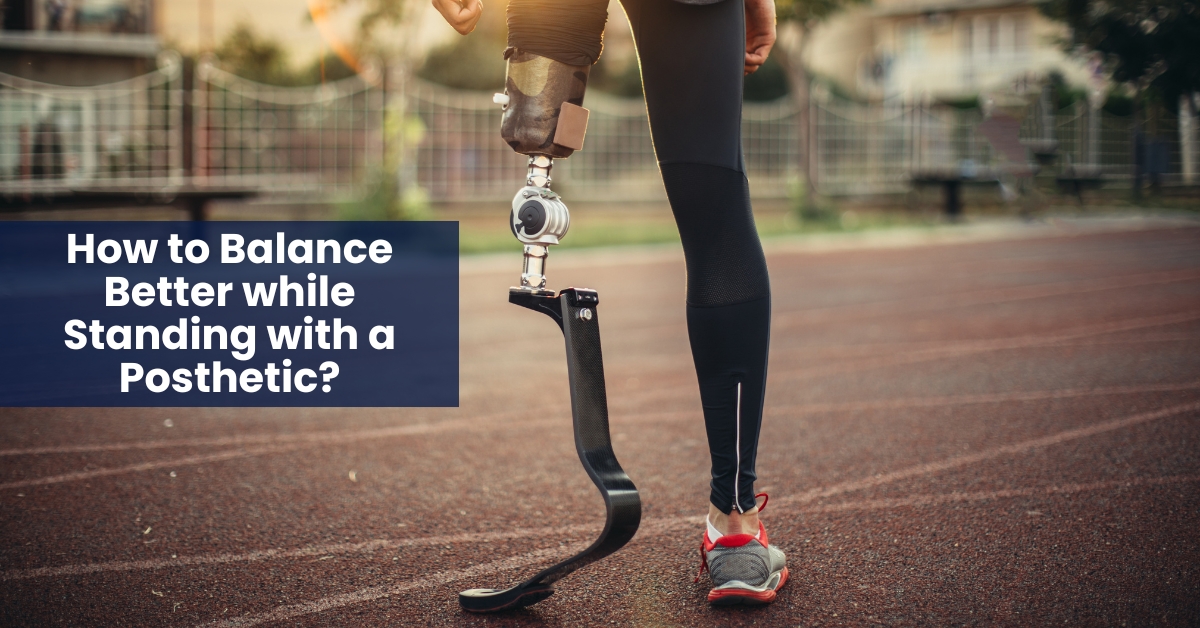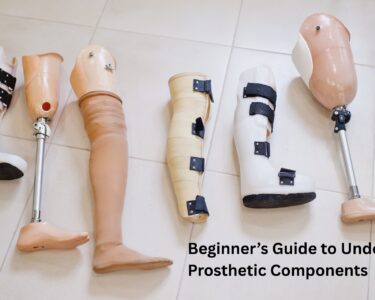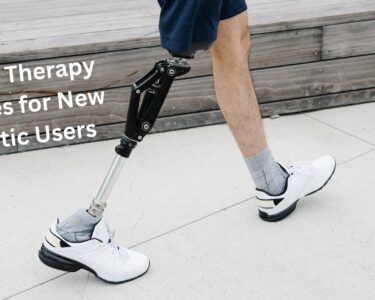Balancing while standing can be one of the biggest concerns for someone using a prosthetic leg, especially in the early weeks or months after amputation. Whether you’re a new prosthetic user or someone looking to improve your daily comfort and stability, learning how to balance better is key to living confidently and independently. In this guide, we’ll break it down into simple, helpful steps, while addressing common challenges and practical tips that can help you stand tall literally.
Why Balance Matters for Prosthetic Users
Balance is at the core of almost everything we do—standing up, walking, turning, reaching for things. For prosthetic users, especially those with a lower-limb prosthesis, good balance helps:
- Prevent falls or injuries
- Reduce strain on the sound leg
- Make walking and standing feel more natural
- Improve overall confidence in daily activities
Many users initially struggle with balance because their body is adapting to a new center of gravity, and muscles that once did less work may now be more active in maintaining posture.
Common Reasons for Balance Issues
Understanding why you feel unsteady can help you improve. Some common reasons include:
- Uneven weight distribution between the sound leg and prosthesis
- Improper socket fit or alignment of the prosthetic leg
- Weak core or lower limb muscles
- Lack of confidence or fear of falling
- Surface instability (slippery floors, uneven ground)
Start with the Right Prosthetic Fit
Before anything else, ensure your prosthetic limb fits well. A poor fit can throw off your balance and lead to pain, skin issues, or instability.
- Visit your prosthetist regularly for check-ups and adjustments
- Make sure your prosthesis is aligned properly with your body
- Report any discomfort or changes in limb shape to your care provider
Remember, your prosthetic limb isn’t a “set it and forget it” device it may require regular updates or tweaks as your body changes. If you’re unsure about your alignment or facing discomfort while walking, check out this helpful guide on how to walk with prosthetics.
Strengthen Your Core and Supporting Muscles
Your core muscles those in your stomach, lower back, and hips are essential for good posture and balance. Here are a few exercises that can help:
- Seated leg lifts: While sitting, lift one leg at a time slowly. Hold for a few seconds and lower. This strengthens the hip flexors.
- Wall sits: Lean against a wall and lower yourself into a seated position. Hold for 15–30 seconds. This builds leg and core strength.
- Balance on one leg (with support): Stand near a wall or chair, lift one foot, and hold for a few seconds. Switch legs. Even doing this with your prosthetic foot can train balance.
- Bridge pose: Lying on your back with knees bent, lift your hips to strengthen your glutes and lower back.
Always consult with a physical therapist before starting new exercises to ensure they are safe for your situation.
Use Supportive Tools
There’s no shame in using tools to help with balance while you’re still building strength or confidence.
- Canes or walkers: Helpful during early rehab or recovery phases
- Parallel bars: Great for balance practice in a physiotherapy setting
- Handrails at home: Especially near the bed, in the bathroom, or along stairs
- Non-slip mats: For bathrooms and kitchens to reduce slipping hazards
Supportive tools can be phased out as your confidence and physical ability grow.
Practice Standing Exercises
You can improve your balance over time with targeted standing exercises. Try these simple routines:
- Weight shifting: Stand with feet shoulder-width apart. Gently shift weight from one leg to the other.
- Side steps: Take small side steps while holding onto a table or countertop.
- Heel-to-toe standing: Place one foot directly in front of the other, heel to toe, and hold position.
Perform these exercises daily or several times a week. Progress slowly and stop if you feel pain or discomfort.
Focus on Your Posture
Standing tall isn’t just about looking confident it helps balance too. Proper posture distributes your weight more evenly and reduces strain.
- Keep your shoulders back and relaxed
- Engage your core
- Keep your feet hip-width apart
- Avoid leaning on your sound leg too much
Practicing good posture helps retrain your body to support the prosthetic leg better.
Address the Fear of Falling
Many new users feel anxious about losing their balance or falling. This fear can make your body tense up, ironically making it harder to balance. Here’s how to overcome it:
- Start practicing in a safe, controlled environment
- Have someone nearby during practice sessions
- Use mirrors to see your posture and movements
- Celebrate small wins confidence builds with progress
Talk to your physiotherapist if fear is holding you back. They can guide you with techniques to reduce anxiety.
Real-Life Tips from Prosthetic Users
Here are a few practical tips shared by real prosthetic users:
- “Wear shoes with good grip, especially on smooth floors.”
- “I practice standing still in front of the mirror for 2 minutes every day.”
- “If I feel wobbly, I slightly bend both knees it helps me stay grounded.”
- “Start small stand for a few minutes, then increase over time.”
You’re not alone many others are on the same journey and have found tricks that work through trial and error.
When to Seek Help
If you continue feeling unstable despite trying these tips, it’s important to talk to:
- Your prosthetist: To check fit, alignment, and socket comfort
- A physiotherapist: To assess strength, posture, and mobility
- Your doctor: If there are underlying medical issues affecting balance (e.g., nerve damage, inner ear problems)
Balance can improve dramatically with the right help and consistent practice. If you’re researching the right support system or looking for reliable prosthetic manufacturers in India, there are several trusted options that can guide you with fittings and personalized solutions.
Final Thoughts: Step by Step, You’ve Got This
Balancing better while standing with a prosthetic leg may seem difficult at first, but it gets easier with time, practice, and the right support. Focus on strengthening your body, practicing good posture, using helpful tools, and not rushing the process. Everyone progresses at their own pace—and that’s perfectly okay.
You are learning a new way of standing strong. With every step and every effort, you’re building confidence not just in your prosthetic, but in yourself.
If you’re unsure about anything or feel like you’re not progressing, reach out to your care team. There’s help available and you deserve it.
Disclaimer:
This content is for informational purposes only and should not replace professional medical advice. Always consult your prosthetist or healthcare provider for personalized recommendations.








